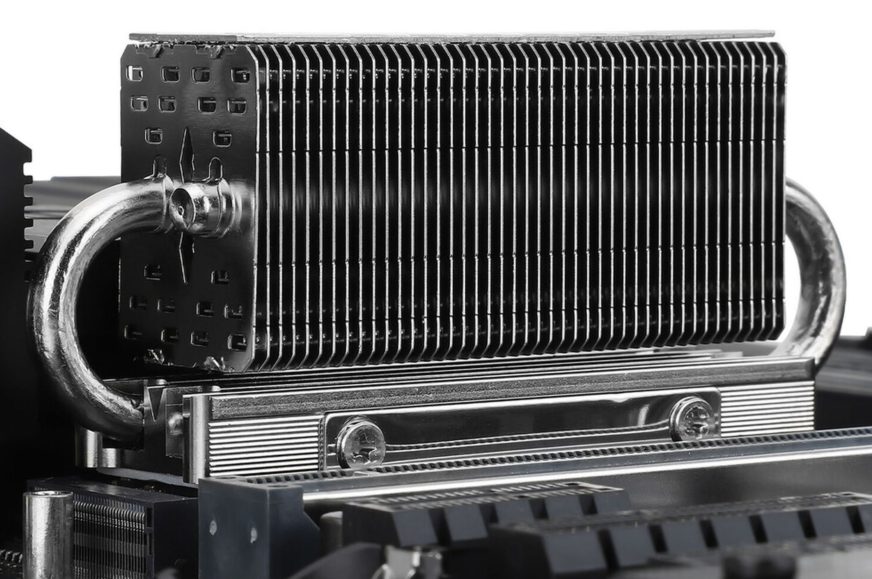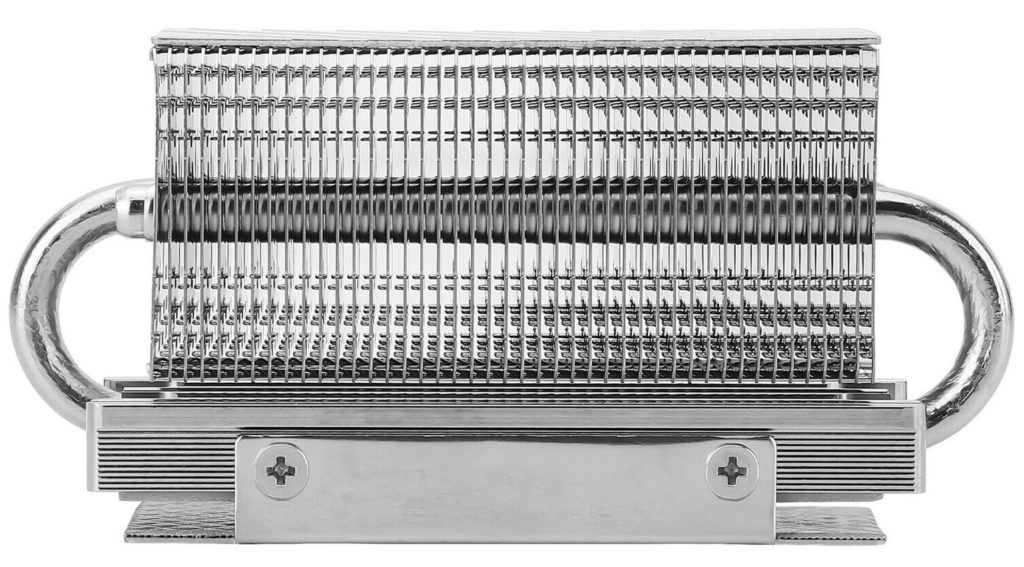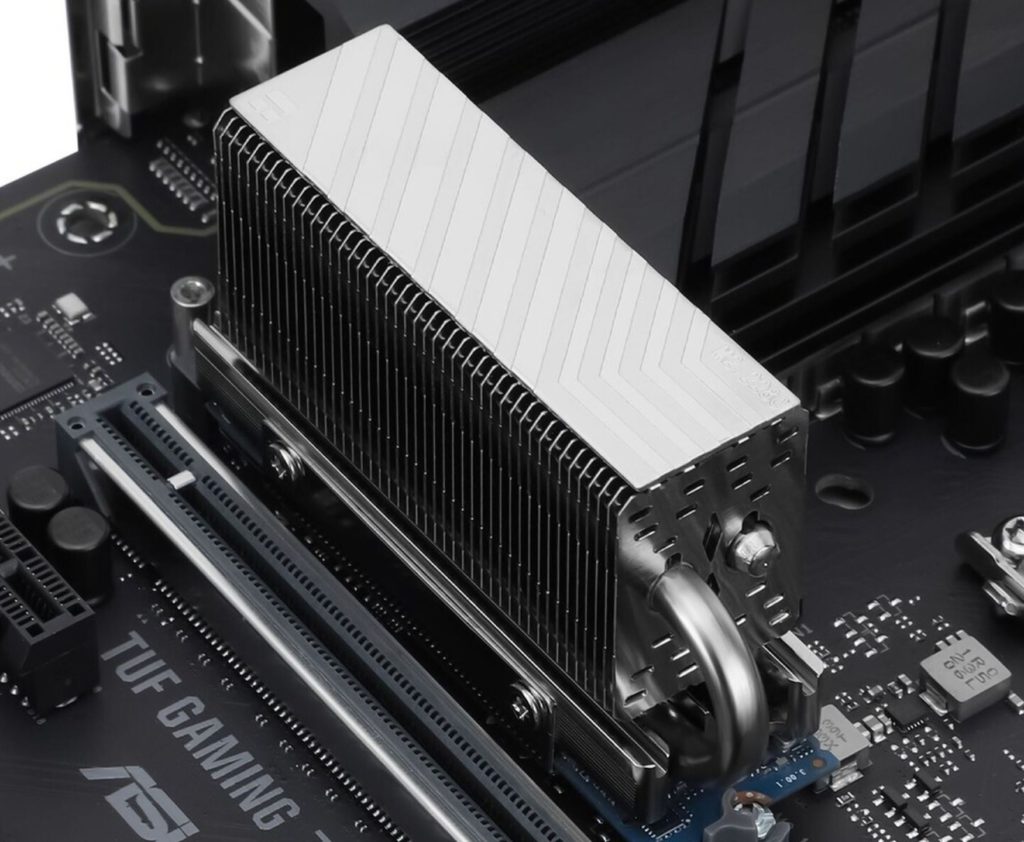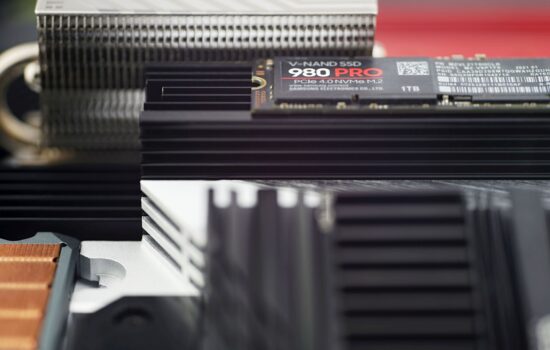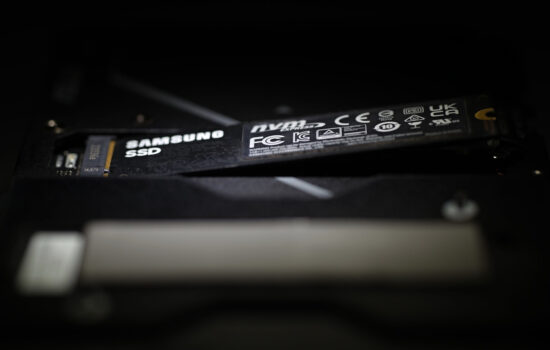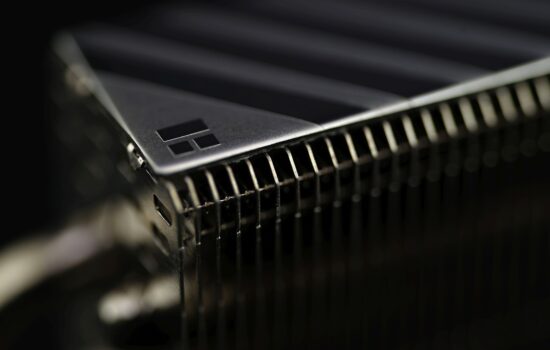Thermalright HR-10 2280
Thermalright’s latest SSD cooler (HR-10 2280) builds on the HR-09 2280. The task for its design seems to have been as follows – to increase cooling efficiency while reducing height. The result is a heatsink with significantly more fins than the older model, and instead of one heatpipe, it is now two, so that the available surface area (fins) is used more evenly.
Compared to its predecessor, the heatsink of the new Thermalright HR-10 2280 is about 4 mm lower, but with a larger width. Instead of 32 (HR-09), the HR-10 has as much as 43 fins.
The thickness of the fins and the spacing between them is not specified by Thermalright, but in both cases they are likely to be smaller measures. From a frontal view with the proportional differences in dimensions, it’s obvious that the HR-10 heatsink (finning) itself is similar in length (to that of the HR-09), and the 14mm longer length is mainly due to the heatpipe protruding more prominently from the body than in the older heatsink. The HR-10 no longer uses one heatpipe (like the HR-09), but two. Albeit apparently with a slightly smaller diameter (Thermalright’s specs state “only” 5mm), but that doesn’t change the fact that the finning will be used more efficiently.
Apart from the use of two heatpipes, a more sensible position is also chosen here, where the opposite side of the heatpipe ends in the middle of the radiator (rather than on top, close to the edge, as in the case of the HR-09).
The profile of the fins has also changed between generations, the shape of which no longer has aggressive protrusions, but is a rectangle with truncated corners. For better airflow through the heatsink, regardless of orientation, the shroud is perforated over its entire surface. The HR-10 heatsink traditionally has aluminium fins, the base is copper. This heatsink is 23.7 mm wide (i.e. it only minimally exceeds the width of the M.2 SSD itself), 90 mm long and 43.8 mm tall.
Only 80 mm long SSDs are supported. Other formats do not extend beyond the base on either side, so it would not be possible to either plug the SSD into the slot or attach it to the spacer with them. Compatibility with double-sided SSDs is still unclear, and judging by the fact that Thermalright doesn’t list the “floating” height of the cooler with respect to the height of the SSD as it used to, you’d better not count on support. From the available images, it seems that the holes in the mounting system bracket are fixed, with no thread shifting options. It would require a user manual, which unfortunately we couldn’t get our hands on.
The weight of the HR-10 cooler is supposed to be 85 grams, which is only 5 grams more compared to the HR-09, into which not even one single heatpipe fits. So there will probably be a little less material used for the HR-10 radiator, but due to the larger fin area (although there will be less thickness per fin and the spacing is also smaller) with more efficient heat transfer at the heatpipe-aluminum fins-environment interface, in addition to the optimal airflow of the system fans, there will probably still be more cooling performance achieved after all. Thermalright hereby completes the range of suitable models for PCIe 5.0 SSDs without their own cooler as well. Although the question is how many such SSDs there will be prospectively…
The Thermalright HR-10 cooler is already hitting store shelves and the price starts at 14 USD.
English translation and edit by Jozef Dudáš
- Contents
- Thermalright HR-10 2280





